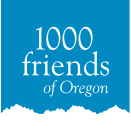
At the end of 2019, the Governor’s Council on Wildfire Response — convened by an executive order — delivered a set of recommendations (approved unanimously by the council) to Governor Kate Brown’s desk. Now is the time for the legislature to unite with the governor and deliver to the people on the Governor's Council on Wildfire Response’s report, including a funding mechanism. If asked, the public will unite in the defense of Oregon — in defense of our forests, climate, human health, water quality, economic safety and so much more.
More of Oregon has burned in a few days than usually does during an entire fire season — and that’s comparing it to fire seasons that have escalated dramatically in both their severity and devastation in recent decades. Speculations about wildfire disasters are no longer about if they will happen, but how bad the damage will be when they inevitably do happen.
As described in 1000 Friends’ A New Vision for Wildfire Planning: A Report on Land Use and Wildfires:
“When more homes are built in the wildland-urban interface, humans are not only exposed to greater wildfire danger, but they are also more easily able to ignite fires there. Because humans start most wildfires, greater land use intensity in the wildland-urban interface is associated with more fires. This means that wildfire risk increases with development in already fire-prone areas. As development sprawls outside of urban areas, as well as into forest and farmlands, more wildfires occur and when they do occur, they pose greater risks because more property and more lives are at stake.”
It’s time for the legislature to demonstrate leadership: Oregon must invest in our capacity to defend and protect the lives, communities and wildlands at risk in the face of climate change and ever-growing fire seasons, including reducing development in high widlfire-prone areas.
Mitigating climate change should be a top priority, as research has shown that is causing the changes in wildfire seasons we’re seeing. Given that fires are a guarantee — even in the best of years — we must also do what we can with the resources available to prevent as much damage and loss as possible.
Oregon’s comprehensive land use system provides the tools, and establishes the necessary legal requirements, to ensure local governments engage in wildfire planning and risk avoidance. The Governor’s Council on Wildfire Response made a total of 12 recommendations for the long term protection and mitigation of catastrophic wildfire damage in Oregon.
The land use-related recommendations are rated as a very high priority. They are as follows:
- State agencies create a wildfire risk map informed by state information that can be used at the property ownership level. Based on the current wildfire crisis, it is clear that any such mapping system be equipped to handle extreme demands as potentially hundreds of thousands of individuals attempt to use it at once.
- In coordination with cities and counties, the Land Conservation and Development Commission (LCDC) undertake rulemaking (under Goal 7) to adopt minimum standards for local governments to plan for wildfire risk. Goal 7 is Areas Subject to Natural Hazards. It “requires local comprehensive plans to address Oregon’s natural hazards.”
- State agencies (DLCD, ODF, and OSFM) provide technical assistance resources to counties and cities to implement wildfire risk planning, zoning, or development of mitigation standards.
As Oregon heads into a long legislative session, the specific actions we’ll take in the long run may be unclear, but we must be decisive and take significant action without waiting. A chance to begin combating climate change and preparing our communities for the next wildfire season will be before us shortly, and we hope the legislature acts accordingly.
